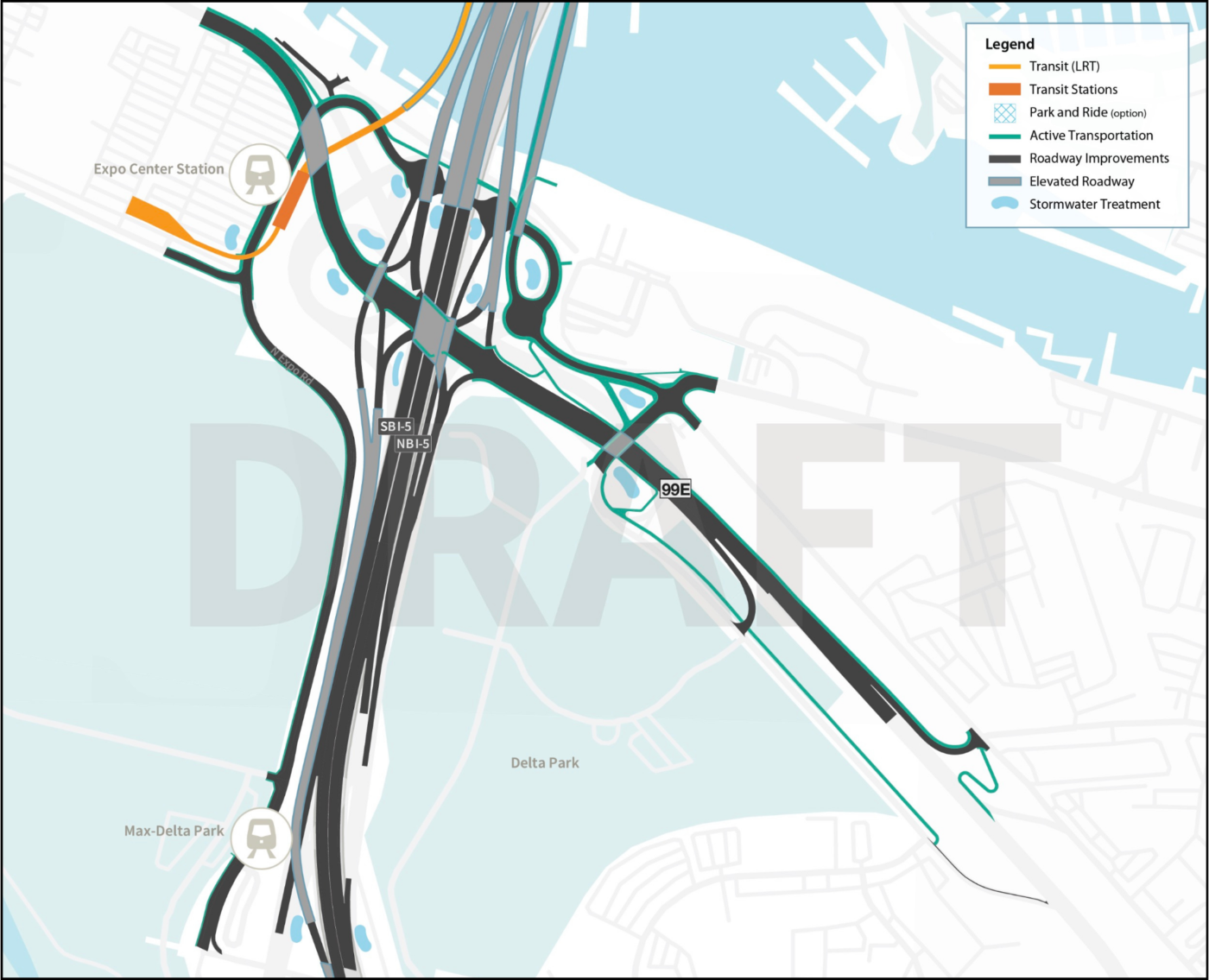“This is a big moment for the Pacific Northwest,” is how Oregon Governor Tina Kotek characterized news announced Friday that the Interstate Bridge Replacement project (IBR) won a $600 million Mega Grant from the Biden administration’s infrastructure bill. These funds are in addition to $1 billion already authorized by the legislatures of Oregon and Washington.
You know a project is expensive when a $600 million grant is just 8% of the total estimated project cost — which in this case could be as much as $7.5 billion.
The IBR is a freeway expansion project that will add lanes to nearly five miles of I-5, enlarge seven interchanges, extend MAX light rail into Vancouver, create new paths for walking and biking, and more.
Despite critics that say the bridge will promote sprawl and increase vehicle miles traveled (VMT), Governor Kotek was one of many local elected officials that welcomed the grant. “This project will help advance our goal of reducing emissions through a modern, multimodal bridge and will provide an infusion of federal funds to our region that will support local jobs and broader workforce opportunities,” the Governor said in a prepared statement.
Even with $2.5 billion already committed to this mega-project, the IBR is still looking for another $2.5 billion in federal grants and both states plan to use toll revenue to make the budget math work out.
News of the grant came out just a day after a scathing article on the project was published by Streetsblog USA. That story relied on economic analysis from noted project critic and No More Freeways Co-founder Joe Cortright. Cortright’s group urged the FHWA to “carefully examine the benefit-cost ratio” of the project and to, “reject the proposes application for federal funds.” The thrust of Cortright’s concern is that the state DOTs from both sides of the river are using the need to replace the Interstate Bridge as an excuse to widen five miles of freeway and expand seven interchanges.
“Most of the cost of this project comes from a freeway widening that doesn’t produce many, if any, benefits,” Cortright told Streetsblog.
Supporters of the project point to the extension of MAX light rail into Vancouver and updated biking and walking paths as proof that the IBR will be a net positive. Many believe that the project will relieve congestion and that cars emit less greenhouse gas emissions when traveling at a steady speed versus being stopped in traffic.
When a precursor project to the IBR was proposed a decade ago, it died (after hundreds of millions were spent on planning) when right-leaning Washington lawmakers balked at the sticker price. So far anti-project voices haven’t emerged in a big way; but as the project gets closer to the finish line, it’s likely they’ll get louder. Whether it’s the use of tolls, presence of light rail, or the sheer cost of the project, we’re likely to see some politicians get nervous.
But with each new funding commitment, the IBR gains momentum. And as we’ve learned over the years these mega-projects rely on momentum to help roll over any speed bumps that might pop up along the way.
Upon hearing the news last week, noted right-wing media personality Lars Larson called the project a “fraud on the taxpayers” and wrote on his blog that the new bridge design isn’t big enough and spends too much on light rail. “We should just call this thing, ‘Boondoggle Bridge 2 point oh’,” Larson wrote.



